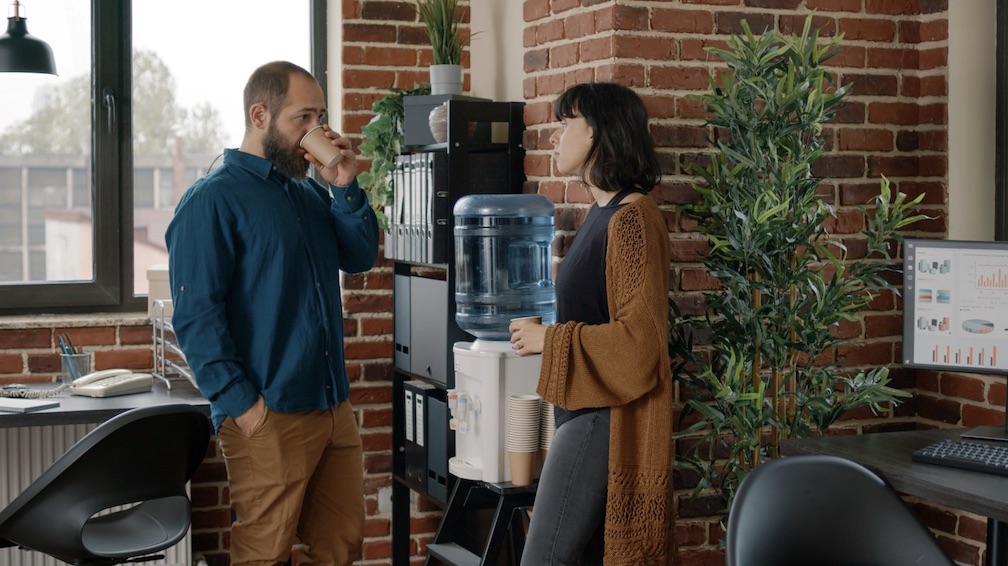How To Ensure Safe Drinking Water In Your Workplace
- Written by Business Daily Media

Water is the lifeblood of every workplace. It fuels not just the coffee machines and the water coolers, but also the people who bring their skills and energy to their jobs every day. Safe drinking water is more than a basic need—it's a critical component of a healthy, productive work environment.
Few things are as vital to our well-being and our ability to perform at our best as staying properly hydrated. When your body has the water it needs, your brain is sharper, your energy levels stay high, and your physical performance improves. In a workplace setting, this can translate into better concentration, less fatigue, and an overall boost in productivity.
On the flip side, dehydration can be a silent saboteur in the office. Even mild dehydration can cause headaches, dizziness, and fatigue, making it harder for employees to focus on their tasks. In extreme cases, it can even lead to more serious health issues. The bottom line is clear: for employees to perform at their best, they need access to clean, safe drinking water throughout their workday.
Risks Of Contaminated Water In The Workplace
The quality of drinking water can vary widely, and even water that looks clean can contain hidden contaminants. These can range from relatively harmless substances like minerals or chlorine, to more harmful contaminants like bacteria, viruses, heavy metals, and chemicals. While tap water in some locations is generally safe, it's not immune to these potential issues.
Drinking contaminated water can result in a variety of health problems, from mild stomach discomfort to more severe ailments such as gastrointestinal diseases, or chronic health effects due to the presence of heavy metals. It's not just an individual health concern—outbreaks of waterborne diseases can disrupt workplace productivity and well-being.
Beyond the direct health risks, businesses also face potential legal and reputational risks if they fail to provide safe drinking water. Regulations require employers to ensure the safety and health of their employees, and this includes the quality of drinking water.
By understanding the risks of contaminated water, every employee can make better choices to ensure the safety and well-being of everyone in the company. Continue to read this to learn more about how to ensure safe drinking water in your workplace.
Ways To Ensure Safe Drinking Water
Providing safe drinking water in a workplace setting is not a one-time task, but rather an ongoing commitment. There are several key strategies that can be employed to maintain the highest standards of water quality.
- Encourage Regular Water Testing
Regular water testing is one of the most effective ways to ensure safe drinking water. It's a proactive measure that can identify potential issues before they become a problem. Experts suggest conducting water tests at least once a year, or more frequently if there are known issues with water quality in the area..
- Promote The Use Of Certified Water Filters And Purifiers
Certified water filters and purifiers play a vital role in maintaining the quality of drinking water. They work by removing harmful contaminants and impurities, while often improving the taste of the water. It's important to choose filters that have been tested and certified by reputable organizations and to replace them as recommended by the manufacturer.
- Advocate For Proper Maintenance Of Water Dispensers And Fountains
Water dispensers and fountains require regular maintenance to keep them clean and functioning properly. This includes routine cleaning to prevent the build-up of bacteria, as well as regular checks to ensure they are working correctly. A well-maintained water dispenser is not just more hygienic—it's also more pleasant to use, encouraging everyone to drink more water.
- Highlight The Benefits Of Using Water From Trusted Suppliers
When it comes to water suppliers, it pays to choose wisely. Reliable suppliers should have a proven track record of delivering high-quality water, should adhere to strict safety standards, and be transparent about their water source and purification process.
By taking these steps, businesses can actively contribute to the quality and safety of drinking water in their workplace, fostering a healthier environment for all.
Building A Culture Of Water Safety In The Workplace
Creating a culture of water safety in the workplace goes beyond just having safe water to drink—it involves making it a shared responsibility and value within the organization.
Management plays a pivotal role in ensuring water safety. By prioritizing it as a health and safety issue, setting clear policies, and providing the necessary resources, they can create an environment where safe drinking water is the norm rather than the exception.
Training and awareness programs are valuable tools for promoting water safety as well. These can range from educational sessions about the importance of hydration to practical training on how to maintain water dispensers or filters. An informed team is an empowered team, and knowledge is the first step towards action.
Lastly, open communication is the key to addressing water safety issues effectively. Encouraging employees to voice their concerns or suggestions can lead to proactive solutions and demonstrates that their health and well-being are valued.
Conclusion
Safe drinking water in the workplace is more than a convenience—it's a responsibility and a commitment to the well-being of everyone who forms part of the organization. Ensuring this requires ongoing attention and action, from regular water testing and maintenance of dispensers, to education and communication about water safety. It's a worthy investment that can lead to healthier, happier, and more productive workplaces.









